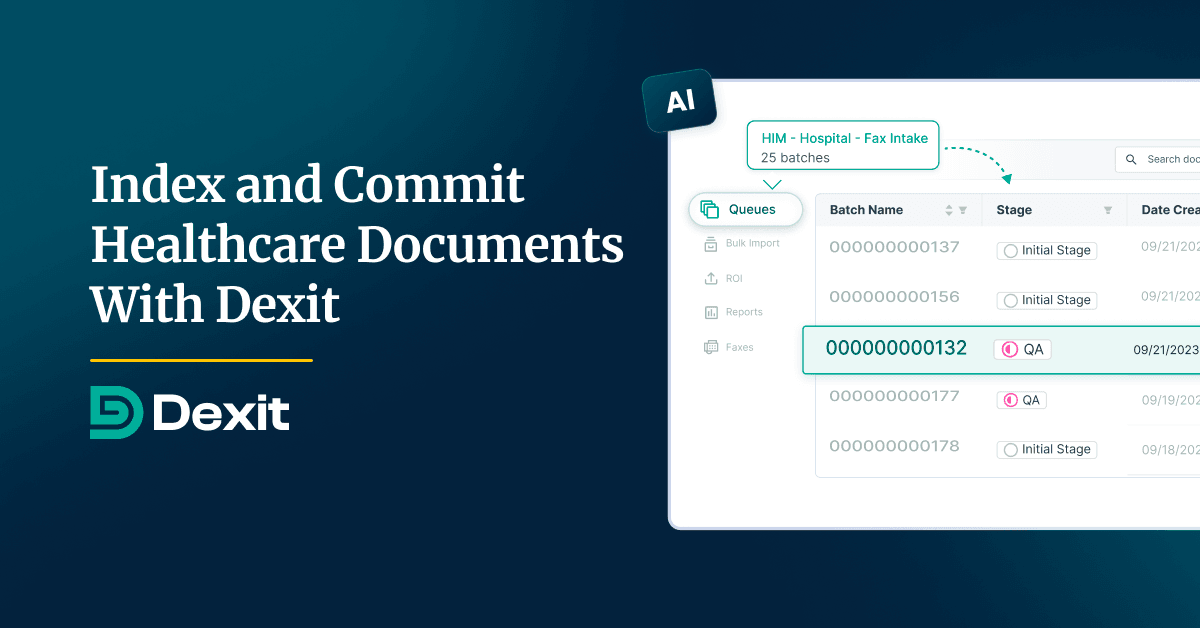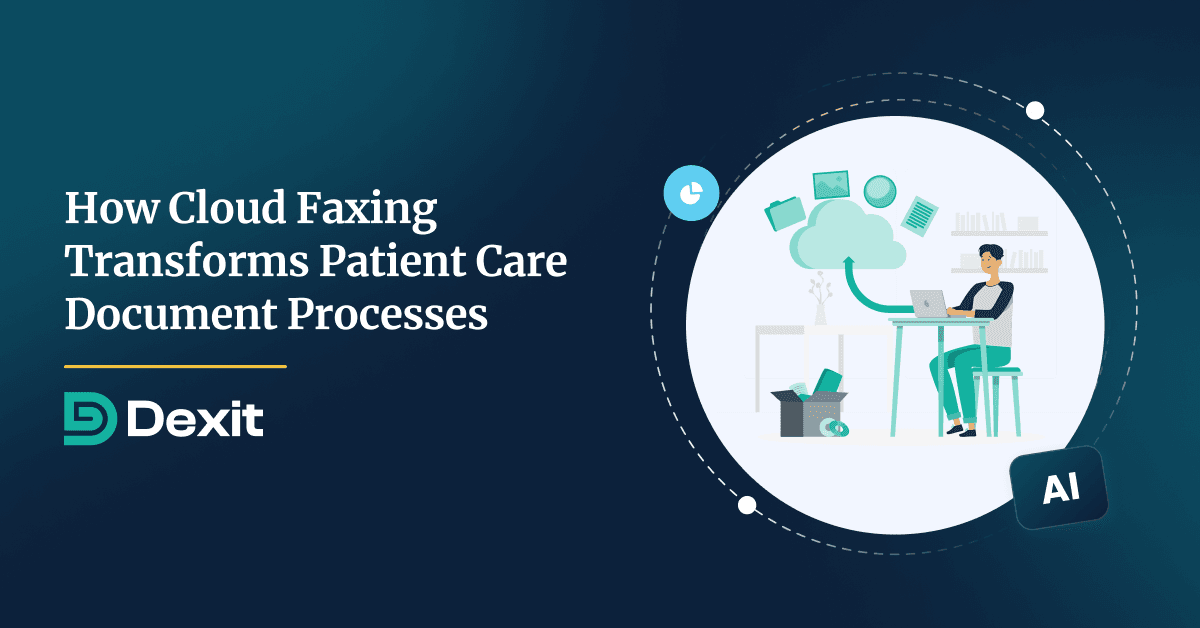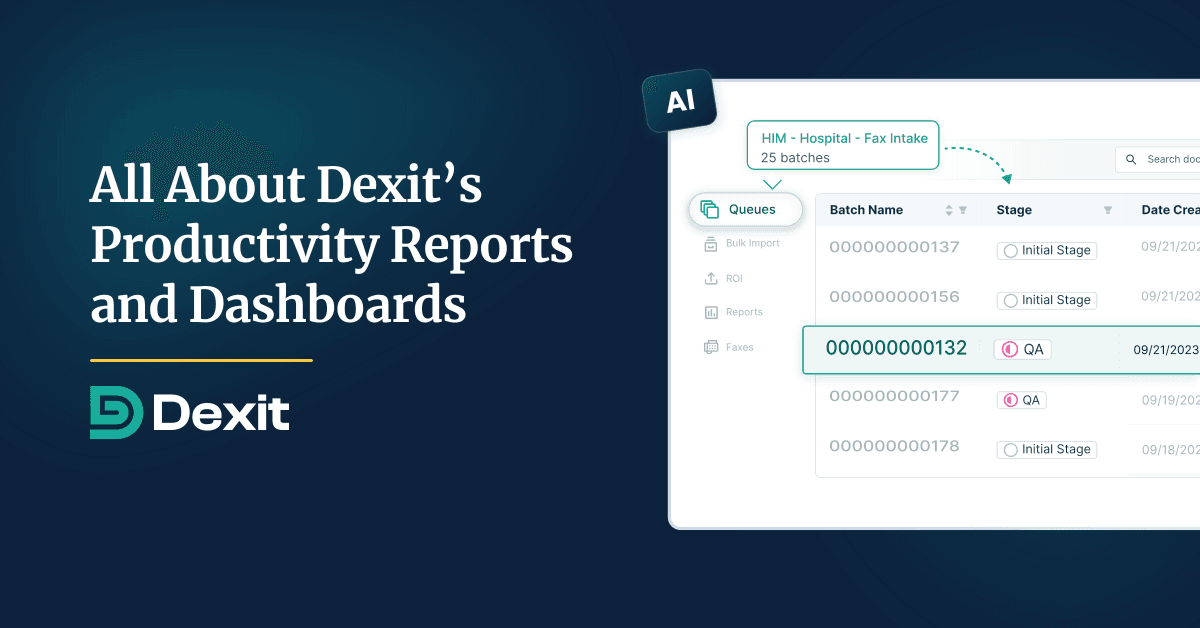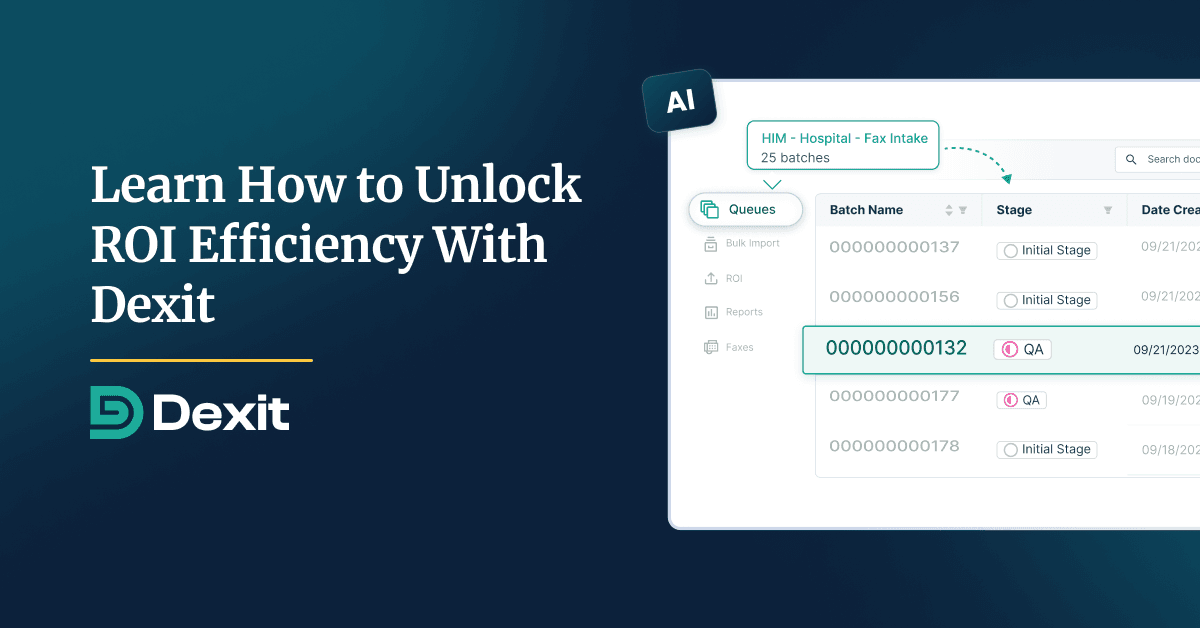
Index and Commit Healthcare Documents in a Single Location With Dexit
Within the realm of healthcare document indexing, precision is paramount. It guarantees that every piece of …

In the ever-evolving healthcare landscape, the efficient management and secure exchange of patient information are pivotal in delivering quality care. Amidst this digital transformation, cloud faxing emerges as a revolutionary solution poised to streamline traditional document processes.
Integrating cloud faxing technologies enhances operational efficiency and safeguards patient privacy and compliance. Today’s blog delves into the transformative power of cloud faxing in patient care, exploring its multifaceted impact on document management workflows within healthcare institutions.
Explore:
Traditional faxing in healthcare has long been the backbone of communication between medical professionals, clinics, hospitals, and other healthcare entities. However, despite its widespread use, traditional faxing presents several challenges:
Addressing these challenges requires healthcare organizations to explore modern alternatives. By embracing modern digital technologies, healthcare providers can enhance security, efficiency, and accessibility while also reducing costs and environmental impact associated with traditional faxing methods.
Cloud faxing in the context of healthcare document management refers to the process of sending and receiving faxes through cloud-based platforms instead of traditional fax machines. This modern approach offers several advantages for healthcare organizations, including improved efficiency, cost savings, and enhanced security.
By leveraging cloud faxing services, healthcare providers can streamline their document workflows, eliminating the need for physical fax machines and the associated maintenance costs. Furthermore, cloud faxing solutions often integrate with Electronic Health Record (EHR) systems, allowing for seamless transmission of patient information while maintaining compliance with healthcare regulations such as HIPAA.
Cloud faxing also offers advanced security features such as encryption and audit trails, ensuring that sensitive medical information remains protected during transmission. Overall, cloud faxing represents a crucial component of modern healthcare document management strategies, facilitating efficient communication while safeguarding patient data privacy and compliance.
Implementing a Document Management System (DMS) with cloud faxing capabilities can significantly transform health data management in several ways:
The adoption of cloud faxing technology marks a significant advancement in the realm of patient care document processes. By seamlessly integrating with existing workflows, cloud faxing not only improves operational efficiency but also ensures the utmost security and compliance.
As healthcare institutions embrace this innovative solution, they are better equipped to deliver timely, accurate, and patient-centered care. The transformative potential of cloud faxing in revolutionizing document management workflows underscores its indispensable role in modern healthcare settings, where every moment and every detail matters in the pursuit of optimal patient outcomes.
Join over 3,200 subscribers and keep up-to-date with the latest innovations & best practices in Healthcare IT.

Within the realm of healthcare document indexing, precision is paramount. It guarantees that every piece of …

In the dynamic and ever-evolving landscape of modern healthcare, the significance of effective document …

According to a 2023 HIMMS survey, nearly 65% of health systems lack medical images and other unstructured …